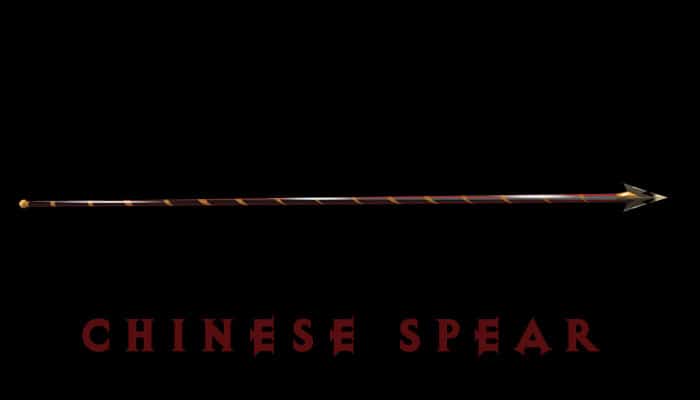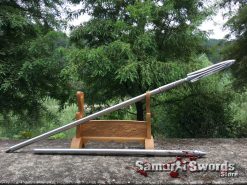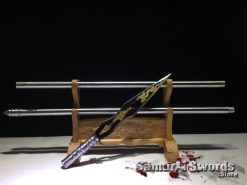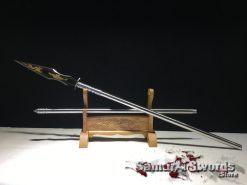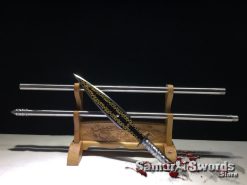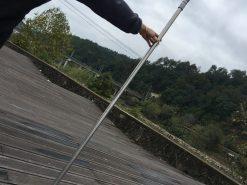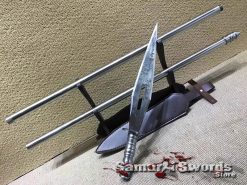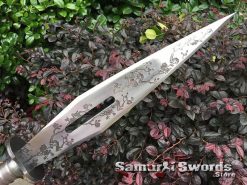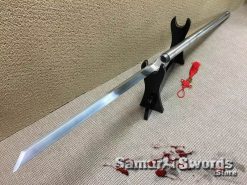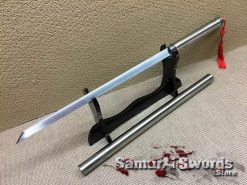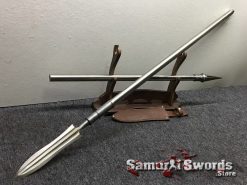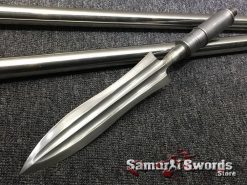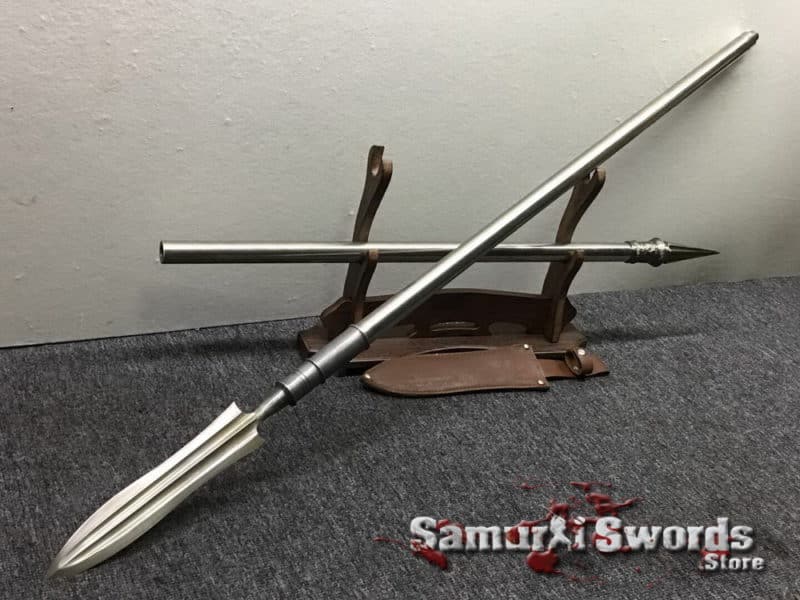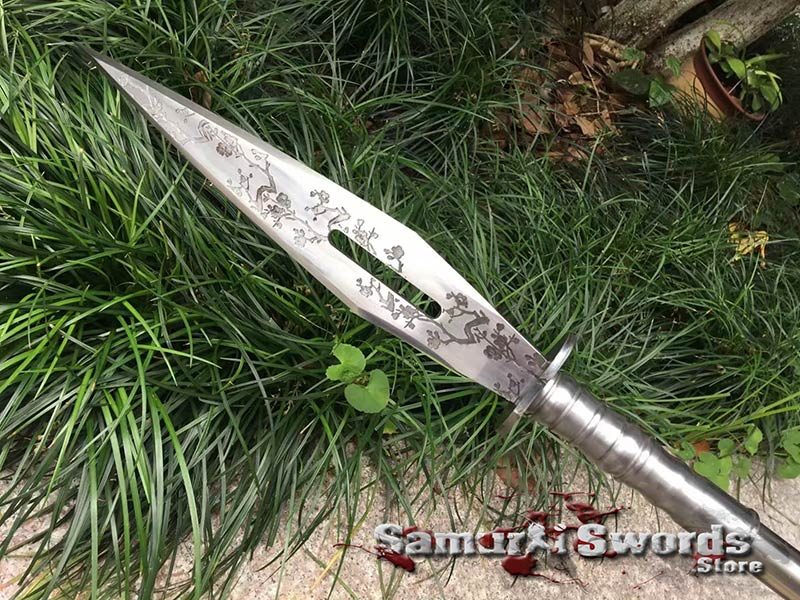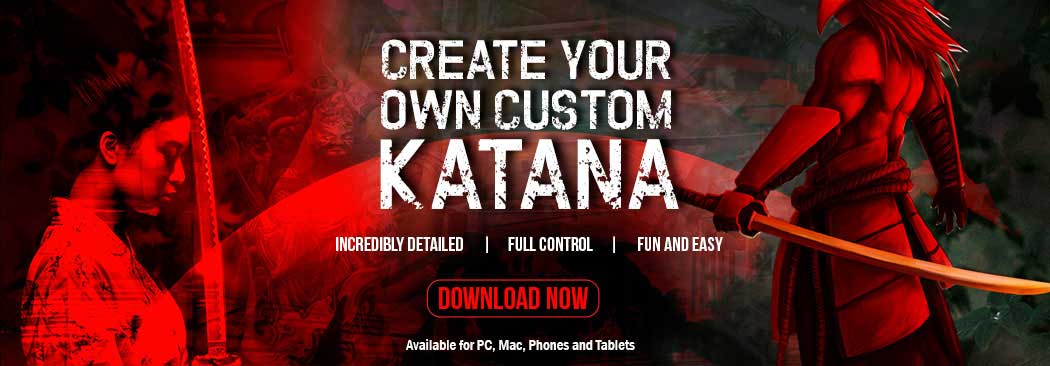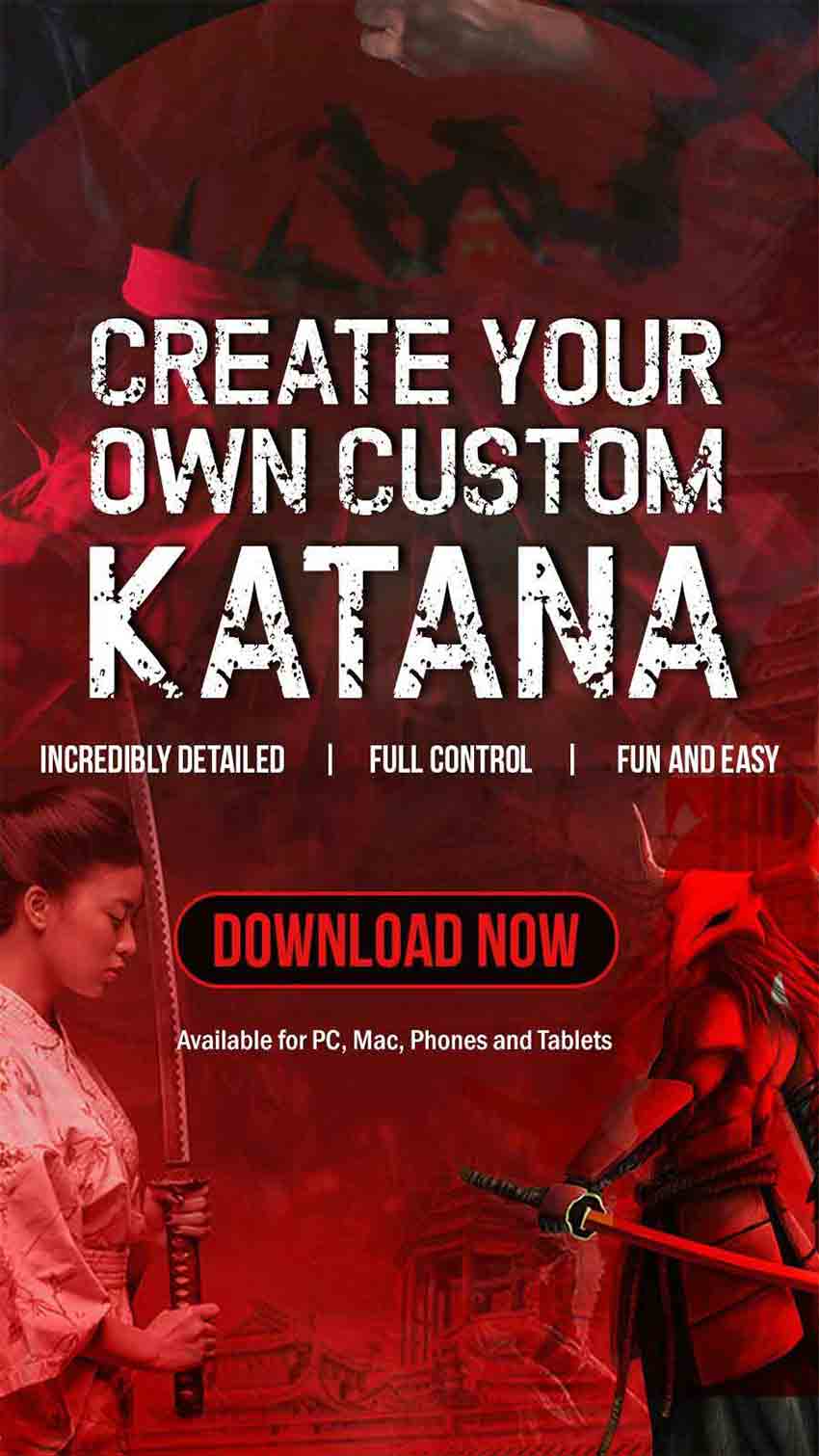Chinese Weapons
Chinese Spear
Chinese Spear
The Chinese spear is also known as Qiang, and because of its easy way of production, there were numerous styles and variations of these on the battlefield.
This is also considered as one of the four primary weapons of the Chinese, along with the Dao, the Gun, and the Jian; this collection of weapons is called The King of all Weapons.
The Chinese Spear Sword
The Chinese spear (the ch’iang or qiang) is probably as ancient as the country itself; not only is the weapon considered to be among the oldest military weapons in China, but it was also created primarily as vs cavalry weapon.
Even before 400 BC, foot soldiers utilized spears that had a measurement of nine feet, yet there were other times when some used those eighteen feet spears; these Chinese weapons mixed a thrusting point with either a slicing or hooking blade.
Additionally, there were also other types of Chinese spears that had been utilized for battle and these included the following:
- The Snake-Head Pattern Spear
- Single-Hook Spear
- Double-Hook Spear
Unlike others that had been utilized in other countries, the Chinese spear was not really made to be thrown; instead, these weapons had a special collection of techniques that were developed which greatly resembled the style of the single-headed staff.
The staff that featured different lengths derived spill-over value from other spear tactics despite already having their own complete system.
History of the Chinese Spears
In ancient China, numerous advanced warriors or martial artists knew that the pointed weapon when utilized by a proficient spear wielder would be formidable and excellent when executing lethal and deadly attacks.
Two top advocates of the spear were the famed General Yueh Fei and the very first female warrior, Fa Mu Lan; both of these individuals were considered invincible due to their proficiency and excellence when using the Asian spear in combat.
There were even stories and reports that the general created the Xing Yi boxing system that was based on his mastery of the spear and other martial art systems.
There were also rumors about the Water Margin era of ancient China stating that a few of the Leung Mountains heroes were highly skilled spear players. It was also said that their best Chinese spear player was Lin Chung, the Leopard Head, whose finishing attack was the Returning Horse Spear attack/thrust.
This type of shift was a reverse body / retreating ploy that lures a pursuing opponent into a state of frenzy; when this happens, the spear player will then stop and execute an overturning spear thrust right at his enemy. When he is able to execute this properly, the weapon rarely misses the target.
Another individual – Yang Cheng Fu who comes from the Yang Family is claimed to have always been carrying a short, one-headed Chinese spear for protection; additionally, the weapon also functioned as a short staff and a straight sword.
Under the disguise of warfare, the British, during the middle of the nineteenth century, deduced that the Chinese spear was superior compared to their bayonets. The weapon is basically smaller and its functions are somehow compressed into thirty different techniques.
Features of the Chinese Spears
Common aspects of the Chinese spear are the red horsehair tassel and its leaf-shaped blade. The presence of the tassel exhibits the status of an elite troop, plus it also works efficiently for tactical purposes.
When the spear moves swiftly, the tassel helps in blurring or confusing the vision of one’s enemy, making it more difficult for them to actually grab the spear’s shaft.
Furthermore, this also serves another purpose to prevent any blood flow on the blade from getting to the weapon’s wooden shaft. This is because blood would make this portion sticky or slippery once dried, and it would be a problem when wielding the weapon during battle.
The weapon’s length varied and the measurement would range from nine feet to twenty-one feet. According to Qi Jiguang, a military general, the Ming army categorized spears that measured more than nine feet as short spears, those that are fourteen feet as the long spears, while the spears that measured less than nine feet were considered as spiked staffs these were used primarily for hitting and not stabbing.
Generally, the spears were utilized for war and were commonly made out of hardwood; yet martial arts or Wushu spears were usually made from wax wood which is a more flexible and lighter material that is better for performance. These were called the flower spears.
The Chinese Spears in Martial Arts
A lot of Chinese martial arts feature a curriculum for spear training and the conditioning that is part of the spear technique is considered helpful for the art; this is also seen as being very helpful since a lot of styles in different martial arts first introduce the use of Chinese spears to the students.
Moreover, there are some empty-handed fighting schools in China that credit the weapon as their foundation, specifically Bajiquan and Xingyiquan.
The Guandao
The Guandao is a specific kind of Chinese pole weapon that is utilized for a couple of Chinese martial arts. In Chinese, the proper way of calling the weapon is the yanuedao the name that always appears in various texts from the Song Dynasty to the Qing Dynasty.
It is comparable to a European glaive or Fauchard and is made up of a heavy blade and a spike right at the back; there are times when it also features a notch at the upper base of the spike which can readily catch an enemy weapon. Additionally, there were uneven serrations that make the blade’s back edge spike.
The Guandao’s blade is also mounted on a five to six-foot-long metallic or wooden pole that features a pointed metallic weight that helps balance the blade; it also works for hitting on the opposite end.
Traditional Ways of Utilizing the Chinese Spear
Listed below are some of the classic ways of using the spear, and these are very similar techniques to a straight sword.
- Piercing and thrusting upward
- Hacking then bringing downward
- Jabbing
- Splitting then moving right to left before going downward
- Thrusting upward
- Groping, holding the sword or spear parallel to the wielders body
- Chiseling, slicing the edge back
- Rushing, gripping the point upward, etc.


